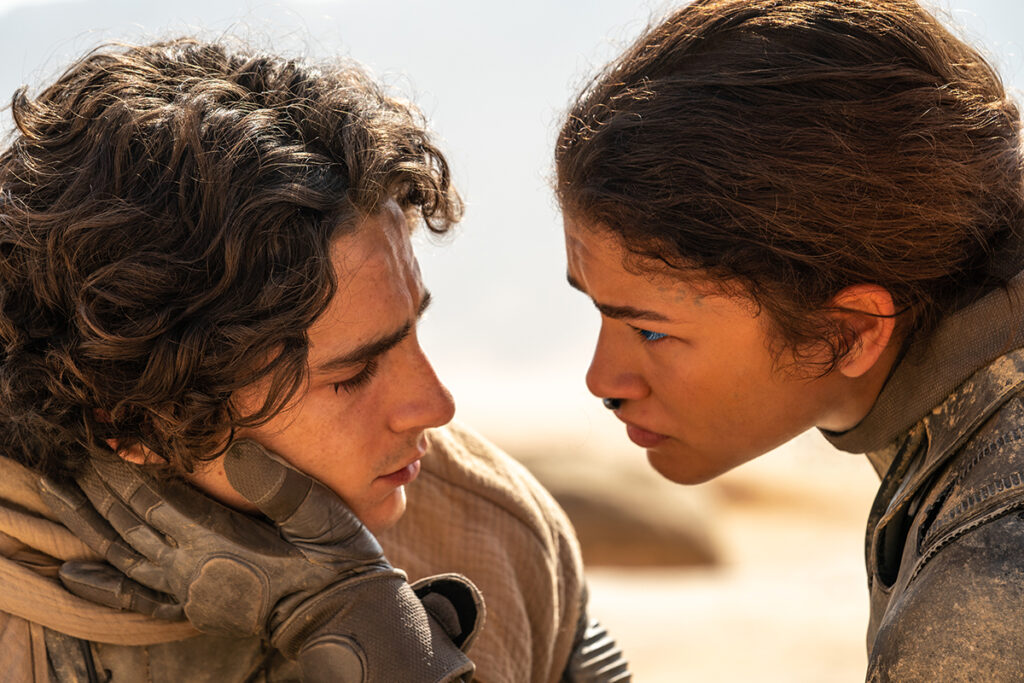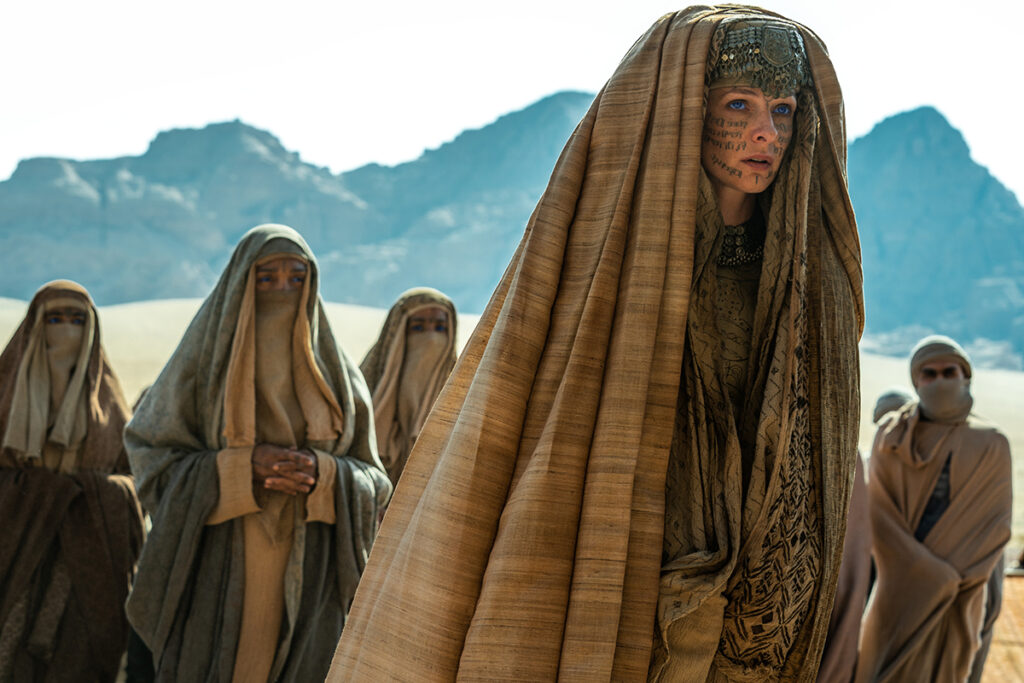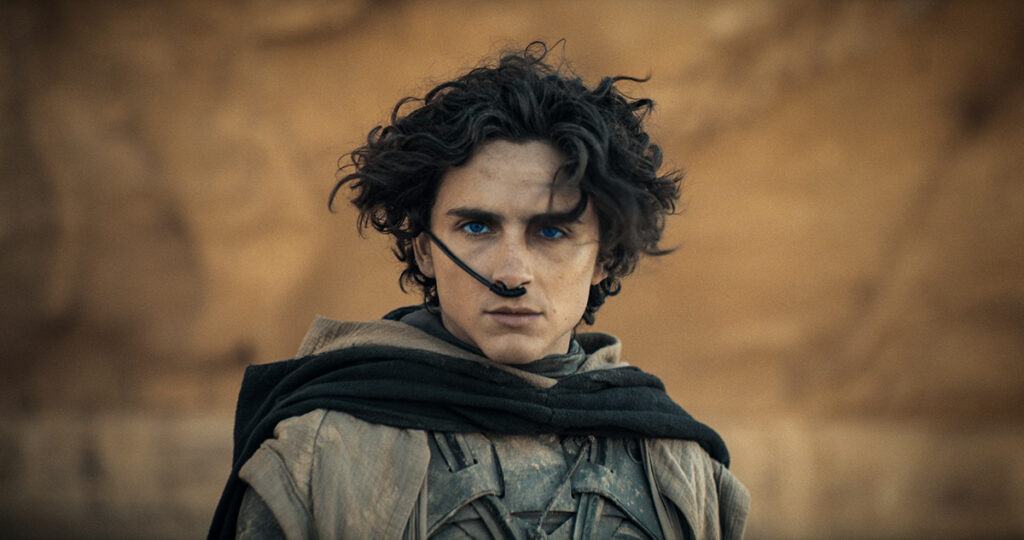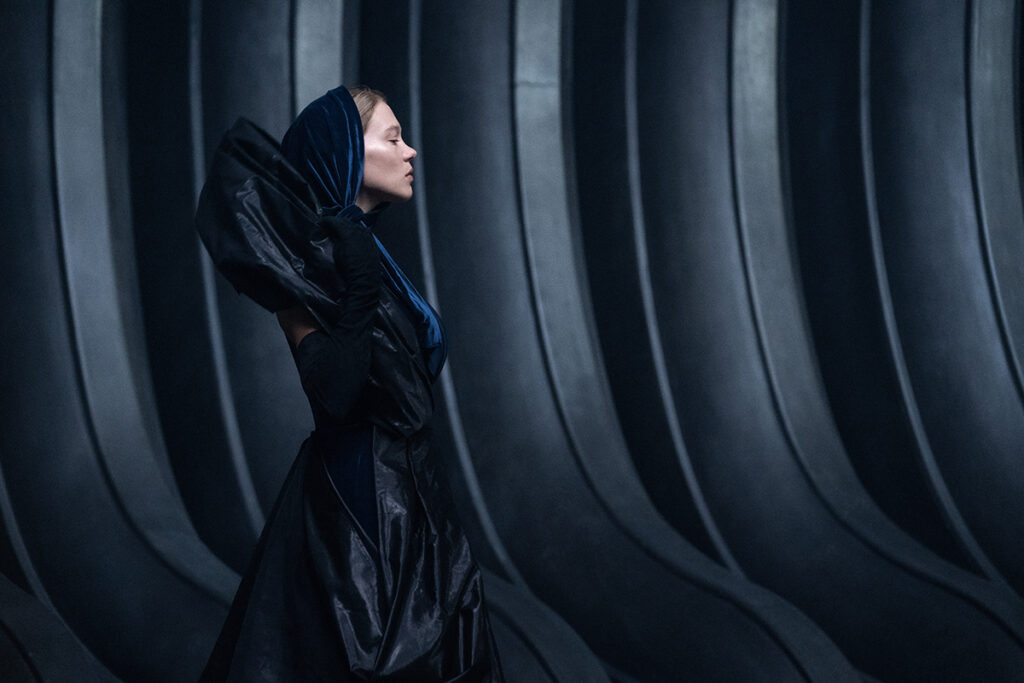Dune: Part Two arrives with all its pomp and circumstance to rival other big productions. The gobsmacking visual effects and majestic cinematic score easily inspire awe. But for all its accessories, it’s essential a white savior film. The question is whether Dune: Part Two will freshly address its hero’s identity because there are only so many “you are the one” movies from a white man’s perspective I can watch before it gets tiresome. Production-wise, Dune: Part Two is a film that delivers stunning desert vistas alongside dreary empires of destruction, but its runtime and same-old perspectives feel like been there done that.
Directed by Denis Villeneuve and written by Villeneuve, John Spaihts, and Frank Herbert, Dune: Part Two continues from the end of the first movie. Starring Timotheé Chalamet as Paul Atreides, it shows him now stranded in the endless desert alongside his mother, Jessica (Rebecca Ferguson), after the Emperor’s machinations led to a surprise nighttime massacre. While in the desert, Paul encounters the woman of his dreams, Chani (Zendaya), along with the rest of the Fremen.
So begins the lengthy journey of Paul and Rebecca’s infiltration into this society, as Paul plots his vengeance against the parties responsible for his father’s death and the fall of his house. Along the way, the film touches up, but never goes into, themes of white savior, colonialism, religious manipulation of native people, and working-class uprisings.
Performances Vary from Amazing to Passable

Zendaya as Chani is one of the best performances in Dune: Part Two. Although her transformation from distrusting acquaintance to love interest feels rushed even in the bloated runtime, her performance conveys all the emotional peaks and valleys. Buffering her more open performance comes Rebecca Ferguson’s more restrained work. As characters go, they seem as different as night and date, with Chalamet’s Paul caught between them. In any other context, he’d be a “momma’s boy” and Chalamet pulls that aspect off.
But he does not feel believable as a person who suffered loss or as a savior set on vengeance. He struggles to retain the center, as his co-stars draw our attention. He and Zendaya lack heat, seeming more like friends than soon-to-be lovers. Javier Bardem, as Stilgar, is fantastic, feeling wise yet foolish as he leaves his people’s survival to an outsider’s heroism. Florence Pugh’s performance as Princess Irulan feels wooden, while Christopher Walken as the Emperor lacks believability. Keep in mind that many of these cast members decimate previous film roles. But for whatever reason, the sparkle, the it-factor is not here.
Dune: Part Two Is Visually Incredible

Visually, Dune: Part Two is a wondrous experience to witness There’s never a creature in those dusty landscapes that feels unreal. It builds an authentic world that feels possible and present, outside the viewer’s reality and within their grasp. Details, from the gigantic sandworms to the adorable mousy creatures travailing the landscape, show a skill and reverence for filmmaking that deserves notice and praise. Although, how many stylish slow-mo walks can one have before thinking, “Enough?”
Dune: Part Two is this year’s epic akin to the scope of famed films like Ben-Hur or The Ten Commandments. It deserves heaps of praise for how the different characters look, the clothing, the way the lore unfolds, all of it except maybe the Fremen’s footwork to traverse the desert, which appears and disappears depending on the movie’s needs.
But its epic quality is also why the film falters.
It’s Time for White Saviors to Retire

Cinema has done to death tales of white saviors. The epic movies I referenced above are over sixty years old, yet beyond looks, little has changed. These tales prize the lives of white men as more valuable than others. While it’s a fictional movie, it reinforces arguments that white men have the most value. Those same talking points arise in court cases when a white man commits a violent crime, especially against a woman. It’s “think of what he can offer to society,” not what she has lost. A white man’s potential trumps all else.
The most significant issue is that aside from the cinematic breadth of Dune: Part Two and a couple of performances, the movie isn’t entertaining enough. It’s standard fare in a phenomenal setting. Additionally, the colonialistic aspects tied with its depiction of religious indoctrination feel like propaganda to normalize atrocities.
Style Is Not Enough

Dune: Part Two is a stunning film to behold. But it’s almost three hours long, and its lead cannot should the weight of its thematic ambitions. Chalamet’s dialogue with the Emperor and his evil Kylo Ren look are cringeworthy but it’s not just his fault. Other movies explore these themes entertainingly; some even contribute food for thought. That is not the case here. After all, Jet Li did it better in The One – entertainment-wise – and the title didn’t mince words. Game of Thrones explores similar themes while entertaining viewers. Dune: Part Two might have more to offer on repeated viewing, especially if they make another film, but it’s uncertain if – aside from the dynamite effects – viewers will want to sacrifice that much time again.

